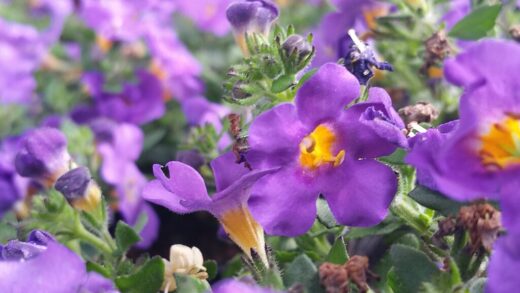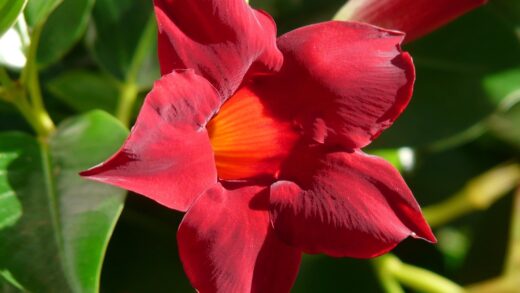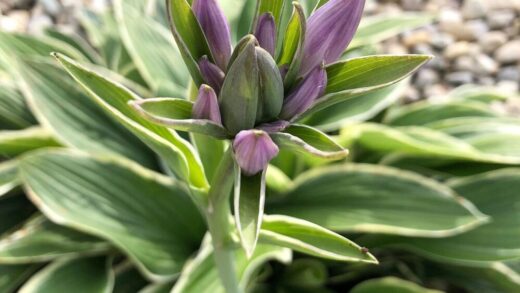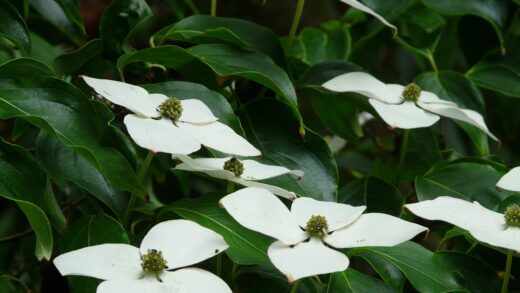Freesia, this fragrant flower native to South Africa, is rightly popular among both garden enthusiasts and cut flower growers. However, for this charming plant to shine in its full splendor and delight us year after year with abundant blooms, a balanced supply of nutrients is essential. The nutritional requirements of freesia are specific and, in different stages of the growth cycle, demand different emphases, which is why conscious fertilization is key to success. Neglecting this aspect can lead to poor growth, susceptibility to diseases, and absent or poor-quality flowering, while an excessive intake of nutrients can be just as harmful as a deficiency.
The Role of Soil and Preparation for Freesias
The foundation of freesia cultivation is ensuring an appropriate soil structure and nutrient content. Ideal for it is well-drained, loose soil, rich in humus, with a slightly acidic or neutral chemical reaction, having a pH value between 6.0 and 7.0. Overly compact, clayey soils are prone to water stagnation, which can lead to the rotting of freesia corms, which is why, in such cases, soil improvement by adding sand and mature compost or manure is essential. Basal fertilization, carried out during soil preparation, provides the nutrients necessary for initial development.
Soil analysis is strongly recommended before planting freesias, especially if cultivation is planned on a larger area or if there have been previous problems with plant development. A specialized soil analysis provides an accurate picture of the current nutrient content in the soil, the pH value, and the level of organic matter. Based on this information, deficient elements can be supplemented in a targeted manner, and unnecessary or inappropriate application of fertilizers can be avoided, which is not only more cost-effective but also protects the environment. Based on the analysis results, it is easier to determine the necessary quantity and composition of the basal fertilizer.
During soil preparation before planting, organic matter, such as well-matured compost or manure, is essential. These not only enrich the soil with slow-release nutrients but also improve its structure, water retention capacity, and stimulate the activity of beneficial microorganisms in the soil. Approximately 4-6 weeks before planting, it is advisable to incorporate these organic materials into the top 15-20 cm layer of soil to allow sufficient time for the decomposition processes to begin and nutrients to be released before the corms are placed in the ground.
Freesia is sensitive to high salt concentrations in the soil, so the use of fresh, unmatured manure, as well as the excessive application of mineral fertilizers immediately before planting, should be avoided. If the soil is too acidic (pH below 5.5), the pH value can be carefully raised by adding limestone powder or dolomite. Conversely, if the soil is alkaline (pH above 7.5), the use of elemental sulfur or acidifying fertilizers (e.g., ammonium sulfate) can help lower the pH, although freesia tolerates a slightly alkaline environment better than an excessively acidic one.
More articles on this topic
Essential Macronutrients: Nitrogen, Phosphorus, and Potassium
Nitrogen (N) is of fundamental importance for the vegetative growth of freesia, including the development of leaves and stems. An adequate supply of nitrogen ensures vigorous, green foliage, essential for efficient photosynthesis. In case of deficiency, plants remain stunted, their leaves turn pale green or yellowish, especially starting with the older leaves, and flowering may also be poorer. At the same time, nitrogen overdose should be avoided, as it can lead to excessive leaf development at the expense of flowering, and plant tissues become looser, making the plant more susceptible to diseases and pests.
Phosphorus (P) plays a key role in root formation, flower formation, and seed development. For freesia, it is particularly important during the corm development phase and the formation of flower buds. In case of phosphorus deficiency, the root system develops poorly, leaves may turn dark green, sometimes with a purplish hue, flowering is delayed or absent, and the number and size of flowers are reduced. Phosphorus is typically applied as a basal fertilizer or at the beginning of the growing season, as it moves slowly in the soil, and the plant needs time to absorb it.
Potassium (K) contributes to the overall health of the plant, its stress resistance, and improves the quality, color, and durability of the flowers. It plays an important role in water regulation, enzyme activation, and carbohydrate transport. In case of potassium deficiency, leaf margins may turn yellow and then necrose (scorch symptoms), stems may be weak, and the plant becomes more susceptible to diseases, as well as to frost and drought damage. Freesia continuously requires potassium throughout the growing season, especially in the period before and during flowering.
Maintaining a balanced NPK ratio is essential for the optimal development of freesia. Generally, it can be said that during the vegetative growth period, a fertilizer richer in nitrogen is more advantageous, while for stimulating flowering, a fertilizer richer in phosphorus and potassium is better. In many cases, a general, balanced mineral fertilizer, for example with an NPK ratio of 10-10-10 or 14-14-14, can also be suitable for basal fertilization, which can later be supplemented with more specifically composed foliar fertilizers or top-dressing, according to the plant’s needs.
More articles on this topic
The Importance of Micronutrients for Freesias
Although freesia requires micronutrients (also known as trace elements) only in small quantities, their presence is essential for the healthy development of the plant and for abundant flowering. These include, among others, iron (Fe), manganese (Mn), zinc (Zn), copper (Cu), boron (B), and molybdenum (Mo). Deficiency of these elements can cause specific symptoms and significantly affect the plant’s condition, even when macronutrients are available in adequate amounts. Micronutrients usually play a role as components or activators of enzymes in plant metabolic processes.
Iron (Fe) deficiency often occurs on calcareous, alkaline soils, because under such conditions iron is present in a form that is difficult for the plant to assimilate. The symptom is yellowing between the veins of young leaves (chlorosis), while the veins remain green. In severe cases, the entire leaf can turn white. Symptoms of manganese (Mn) deficiency are similar to those of iron deficiency, but the yellowing is often less sharply defined, and fine necrotic spots may also appear on the leaves. Zinc (Zn) deficiency can lead to a reduction in leaf size, rosette formation, and growth inhibition.
Boron (B) plays an important role in cell wall formation, carbohydrate transport, and in the setting of flowers and fruits. In case of boron deficiency, young leaves may become deformed, the growing tip may die, and flowering may be poor, with flowers easily dropping. Copper (Cu) deficiency occurs less frequently but can cause wilting and twisting of young leaves and disturbances in flower formation. Molybdenum (Mo) plays a role in nitrate reduction, and its deficiency, by causing disturbances in nitrogen metabolism, can produce symptoms similar to those of nitrogen deficiency, especially on acidic soils.
Supplementation with micronutrients is most often done with complex mineral fertilizers that contain these elements or with special micronutrient preparations in the form of foliar fertilizer. The advantage of foliar fertilization is that nutrients are quickly absorbed through the leaves, so deficiency symptoms can be remedied JMJD. However, it is important to adhere to the exact dosage, as an excessive amount of micronutrients can be toxic to the plant. Maintaining soil pH in the optimal range (6.0-7.0) also contributes to the adequate availability of most micronutrients.
Fertilization Strategies and Timing
Freesia fertilization strategy must be adapted to the plant’s development cycle, soil type, and its nutrient content. The primary goal is to ensure a continuous, but not excessive, supply of nutrients. Basal fertilization, which is carried out before planting, provides the initial nutrient requirement. For this purpose, slow-release organic fertilizers, such as mature compost or manure, as well as complex, balanced NPK mineral fertilizers, which may be richer in phosphorus and potassium to support root and corm development, can be used effectively.
During the vegetative growth period, when leaves and stems develop intensively, the freesia’s nitrogen requirement increases. In this phase, top-dressing can be applied, which can be a liquid nutrient solution or an easily soluble mineral fertilizer with a predominance of nitrogen. It is important, however, not to overdo it with nitrogen, as this can be at the expense of flowering and can weaken the plant. Top-dressing can be applied every 2-4 weeks, depending on the condition of the plants and the soil’s nutrient supply, until the appearance of the flower stalk.
When flower stalks begin to appear and flowering approaches, the emphasis should be placed on phosphorus and potassium. These nutrients support abundant flowering, color intensity, and flower durability, as well as the accumulation of nutrient reserves in the corms for the following year. During this period, the use of mineral fertilizers with a predominance of potassium or special nutrient solutions to stimulate flowering is recommended. Even during flowering, moderate nutrient supplementation can be continued so that the plant has enough energy.
Even in the period after flowering, nutrient supply should not be neglected, as this is when the corms accumulate nutrient reserves, which forms the basis for flowering in the following year. In this phase, potassium again plays an important role, but phosphorus is also essential. Until the leaves dry naturally, it is advisable to apply a potassium-rich fertilizer one or two more times, in a lower dose. Applying an organic mulch during the growing season not only controls weeds and conserves soil moisture but also, through slow decomposition, continuously enriches the soil with nutrients.
Organic and Mineral Fertilizers in Freesia Cultivation
In supplying nutrients to freesias, both organic and mineral fertilizers can find their place, and often the combination of the two yields the best results. Organic fertilizers, such as mature manure, compost, bone meal, or blood meal, decompose slowly, providing a long-term source of nutrients, while at the same time improving soil structure, water regime, and biological activity. These are recommended to be incorporated into the soil primarily as a basal fertilizer during soil preparation before planting. Compost is particularly valuable because, in addition to its complex nutrient content, it also introduces beneficial microorganisms into the soil.
Mineral fertilizers contain more rapidly available nutrients and allow for more precise regulation of the nutrient composition according to the plant’s current needs. They are available in various formulations, such as granules, powders, or liquid concentrates. Granular mineral fertilizers usually have a slower release, while liquid nutrient solutions allow for immediate nutrient uptake, thus being excellent for rapid intervention in case of deficiency symptoms or for targeted support of certain growth phases. Correct use of mineral fertilizers is important, strictly adhering to the dosage instructions on the packaging, to avoid burns and excessive salt concentration in the soil.
Slow-release mineral fertilizers (CRF) are increasingly popular in freesia cultivation as well, because, with a single application, they provide a continuous supply of nutrients for several months. These fertilizers have a special coating that, under the influence of soil moisture and temperature, gradually releases the nutrients. This reduces the risk of leaching and minimizes the risk of nutrient overdose, while allowing for more uniform plant development. Although their initial cost may be higher, they can be economical in the long run due to the fewer applications required.
Foliar fertilization can be a complementary method, especially for quickly remedying micronutrient deficiencies or for strengthening plants during stressful periods (e.g., drought, cold weather). Nutrients absorbed through the leaves are quickly utilized. It is important to know, however, that foliar fertilization does not replace adequate nutrient uptake through the soil, but only supplements it. Foliar fertilizers should always be applied according to the manufacturer’s instructions, diluted, in the early morning or late afternoon, to avoid leaf burn and maximize absorption efficiency.
Common Mistakes in Freesia Fertilization and Their Prevention
One of the most common mistakes in freesia fertilization is over-fertilization, especially the excessive application of nitrogen. Many believe that the more nutrients the plant receives, the better it will grow, but this is not true. Excessive nitrogen can lead to lush foliage at the expense of flowering, can make plant tissues looser, making them more susceptible to diseases and lodging. Mineral over-fertilization generally also leads to increased soil salinity, which can damage roots and inhibit water absorption, causing scorch symptoms on the leaves.
Another common problem is fertilizing at the wrong time. For example, an excessive dose of nitrogen applied in the period before flowering can delay or reduce flowering. Similarly, neglecting nutrient supplementation after flowering can lead to poorer corm development, which negatively affects the quality of flowering the following year. It is important to understand the freesia’s growth cycle and the specific nutrient needs in each phase so that fertilization truly benefits the plant and does not cause damage.
Nutrient imbalance can also cause serious problems. If, for example, we apply too much phosphorus, this can inhibit the absorption of other important micronutrients, such as iron or zinc, causing deficiency symptoms. Therefore, the use of fertilizers with a balanced composition or targeted nutrient supplementation based on soil analysis results is recommended. Instead of the “more is better” principle, the principle of “the right amount at the right time” should be followed when fertilizing freesias.
Finally, but no less importantly, a mistake can be ignoring the soil’s pH value. Even if there are sufficient nutrients in the soil, a non-optimal pH value can inhibit their absorption by the plant. For example, in strongly alkaline soils, the availability of iron, manganese, and phosphorus decreases, while in strongly acidic soils, calcium, magnesium, and molybdenum can become less available, and some elements, such as aluminum, can reach toxic levels. Regular checking of soil pH and adjusting it as needed are of fundamental importance for efficient nutrient utilization.


















